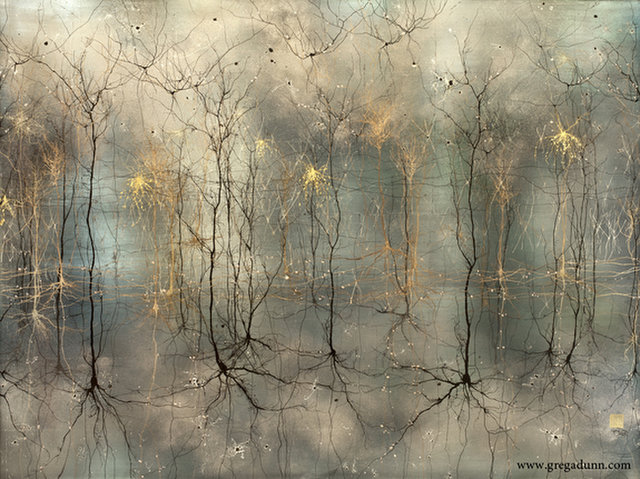Neuroscience + Art
 |
| Phrenologists representation of the brain |
What a difference technology can make. In the 19th century Francis Joseph Gall collected brains and imagined the brain as a set of different organs governing different faculties of the body. Phrenologists then believed they could read different personalities from feeling the different organs through the skull. At the turn of the twentieth century the microscope allowed Santiago Ramon y Cajul to observe and draw beautiful images of neurons.
 |
| Cajul's image of neurons |
Today we have even more beautiful images of neurons created
through the use of florescent staining. Art and science seem to be completely
joined here. This is an image of neurons by Greg Dunn a brain
artist.
 |
| Artistic representation of neurons |
Today MRI scans can record and picture the electrical activity
in different parts of the brain and so accurately identify which parts of the
brain control different human functions – thought, emotion, visual and motor.
MRI scans can record and
Ramachandaran in his TED talk describes how he managed to
remove the pain of a phantom limb using a mirror box that tricked the visual
part of the brain into believing that the limb was no longer paralyzed.
 |
| MRI scan of though, emotion, visual and motor... |
References:
"Monoskop." Monoskop.
N.p., 21 Apr. 2017. Web. 21 May 2017.
Gregory Bateson, Mind and Nature: a necessary unity
Ramachandran, VS. "3 Clues to
Understanding Your Brain." VS Ramachandran: 3 Clues to Understanding
Your Brain | TED Talk | TED.com. N.p., n.d. Web. 21 May 2017.
The Father of Modern Neuroscience Was an
Athlete and Artist. N.d. Psychology Today. By
Christopher Bergland. Web. 21 May 2017.
Dazzling Images of the Brain Created by
Neuroscientist-Artist. N.d. LiveScience. By Tanya
Lewis. Web. 21 May 2017.
Size Does Matter: Gall's Achievements
and the Emergence of Phrenology. N.d. Franz
Josef Gall. Web. 21 May 2017.
"MRI Scanner Sees Emotions
Flickering Across an Idle Mind." Duke Today. Duke Research, n.d.
Web. 21 May 2017.



Comments
Post a Comment